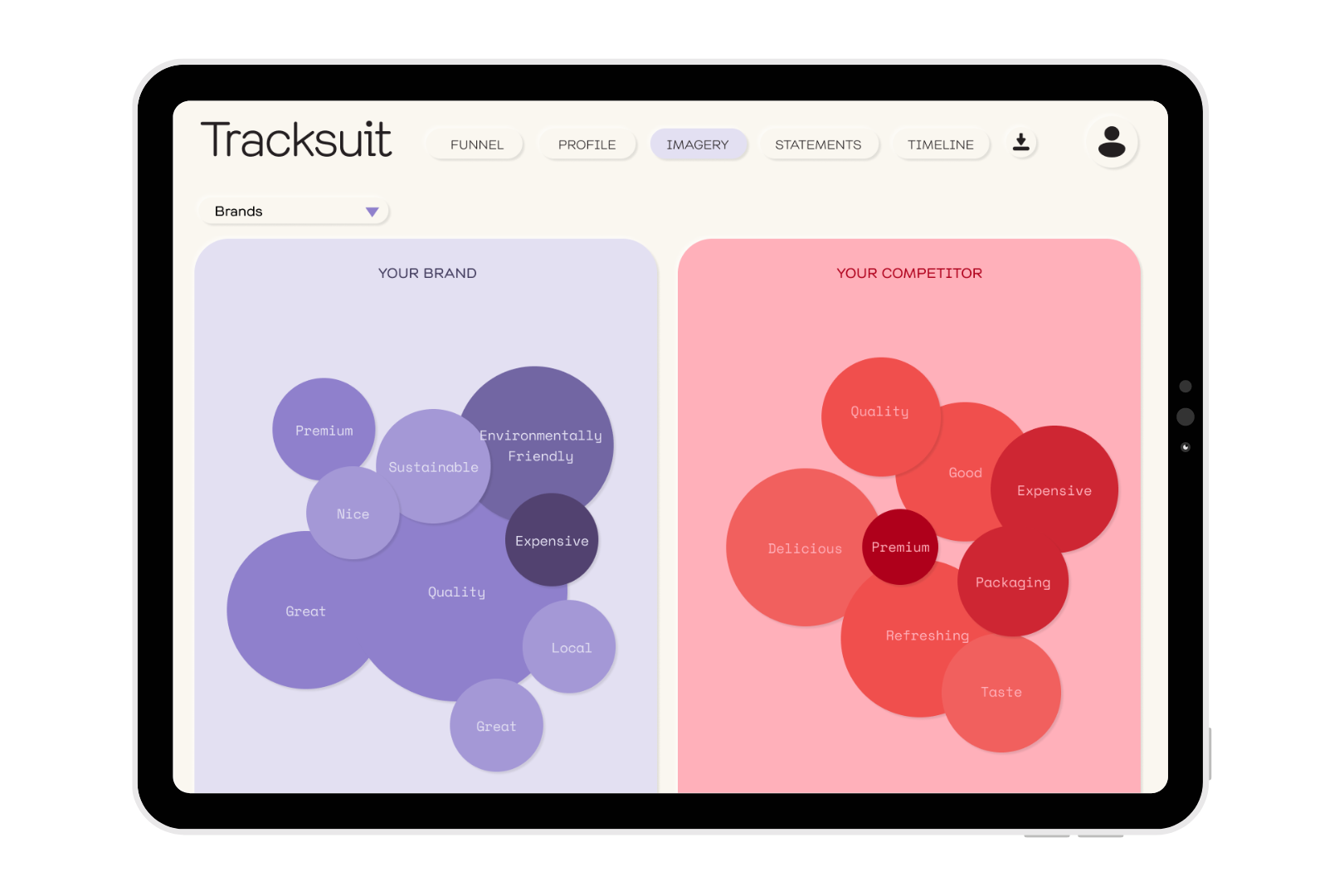How to leverage brand strength to drive better category review outcomes

Before consumers are standing in store making a split second decision on whether to buy your product or your competitors, there’s another hurdle to overcome.
The retailer has to decide whether or not your brand should even be available on the shelf.
FMCG businesses must play the game against thousands of other brands, competing for attention not only on shelf, but also within category managers’ minds, so leveraging your brand’s strength becomes even more of a necessity.
As marketers, it’s hard enough to get a seat at the table for the review, so how do you make sure that you (or your Sales Lead) are using your brand to drive the strongest category review outcomes for your business?
Here are our top six tips (as well as actionable steps) to nail your next review using the strength of your brand.
Sign up to Shorts
For fortnightly brand insights, stories and goodness that'll help you win (we promise).
1. Use brand to upskill your category manager on the target consumer
Category managers have a lot of high-level data at their fingertips, but nothing is as personal as direct consumer feedback. If your category manager can recognize that your brand has a specific group of loyal consumers, then it removes the question in their mind of why your product should be on shelf. There’s nothing more powerful than feedback that shows consumers championing your brand.
How to action:
Pair high-level, third party consumer data from platforms like Nielsen with genuine consumer feedback. Nothing is as undeniable as an essay in email form from a consumer talking about how amazing your brand and product is.
The Imagery section of Tracksuit is another great way to visually engage your category manager to emphasize consumer sentiment surrounding your brand and whether your key value props are resonating. It even gives you a comparison against five of your direct competitors to really highlight your brand’s key differences.

Brands that are able to amplify direct consumer feedback and sentiment make it easy for category managers to understand how your brand is different to competitors, and affirms the role you play within the category.
2. Use brand to get them excited about your business and its plans
It’s difficult to get excited about category review meetings if you’re a category manager who’s having to see 50 suppliers in one review period. Category reviews are always commercially led, so they aren’t the most fun conversations. Marketer’s, through brand, can bring excitement to the discussion with campaign ideas and new product innovations.
How to action:
Lead with the commercials, land how your previous activations were successful and get them excited with your upcoming creative ideas.
How are you commercially performing? Think about your brand's performance against the rest of the category, as well as last year.
Show the story of how your brand awareness, consideration and preference is growing off the back of your marketing activity and product launches using Tracksuits conversion funnel. Proving the success of your previous campaigns means that category managers are more likely to be receptive to your next creative ideas.
What brand campaigns are you planning to run? What innovation is in your pipeline? How will it contribute to category growth?
Paint your category manager a picture of how your brand is helping to drive the category forward, both commercially and in consumers' minds.
3. Use brand to increase share of shelf
Fair share of shelf is what all suppliers and retailers are trying to achieve, but there is only so much space to go around in a retail environment. Greater share of shelf gives you increased brand presence, reduced merchandising support requirements (lower overheads), increased availability and ultimately higher sales rates.
How to action:
Lead with your sales data, and integrate this with Tracksuit’s brand preference metric for a holistic market picture that takes both commercial and brand into consideration. If consumers within your category prefer your brand to your competitors, then you can use this evidence along with sales data to advocate for more shelf space.

4. Use brand to increase distribution
Distribution is the fastest way to increase your sales, driving revenue and your business forward, meaning that your marketing budget gets bigger (fingers crossed).
How to action:
Use Tracksuit’s geographic Profile tool to show that your brand and activity is recognized in specific areas around the country, and overlay your distribution list for your product. If the brand affinity is high where your distribution is low, then increasing your distribution in these areas is a low risk decision for your category manager.
Our friends at Ārepa were able to use Tracksuit data to show that their marketing activity was driving brand awareness and consideration, but they were still seeing direct feedback in their surveys that consumers were struggling to find their product in stores.


Data illustrating that consumers are aware and actively seeking out a product is invaluable when you’re going into conversations with retailers to prove that there’s demand. Ultimately for Ārepa, being armed with this information meant they were able to increase distribution and get their drink ranged where consumers were looking for it.
5. Use brand to justify why you can’t do things
There’s an art in saying no and category reviews require negotiation. What makes sense for the category might not make sense for your brand. Saying no to opportunities that don’t align with your brand protects you in the long term as opposed to saying yes to something that’s in line with a current trend, that may ultimately damage your brand’s reputation and erode consumer trust.
How to action:
Ensure your sales leader has an intimate understanding of your brand (and its importance), including what you stand for, who you are, what you do, and what you don’t. Instead of directly saying no to your category manager’s ideas and derailing any constructive discussions in the review process, use brand as a shield against ideas that aren’t in the best interest of your business. If your category manager really wants to get something across the line and it doesn’t align with your existing brand, you can always create a new brand to support category growth (win-win).
6. Use brand to maximize trade spend
When you’re launching a new campaign or any significant marketing activity, you always want to maximize your sales and increase the number of campaign touchpoints. If your category review is in the lead up to a new campaign launch, it’s a prime opportunity to negotiate a reduced rate on valuable trade marketing assets. This could be anything from displays, point-of-sale and digital banners.
Trade spend is typically committed up front spanning the whole year, so knowing how to effectively use it to drive your sales rates will improve your position in the category and the presence of your brand.
How to action:
Add the support you're giving your campaign or new product launch to your category review document. Get your category manager excited about the activity and start negotiating, then leverage the campaign once it’s live to drive return on investment of your trade marketing budget.
The finishing line 🏁
Brand and marketing are often overlooked and excluded from category reviews, but it doesn’t have to be that way.
It’s time to elevate the importance of brand in your business and bring it to the forefront of these discussions.
A big thanks to our friends Tom & Jess at ANTE for sharing their smarts with us. Find out how, opens in new tab they’re helping FMCG brands grow through sales, marketing and business strategy.









